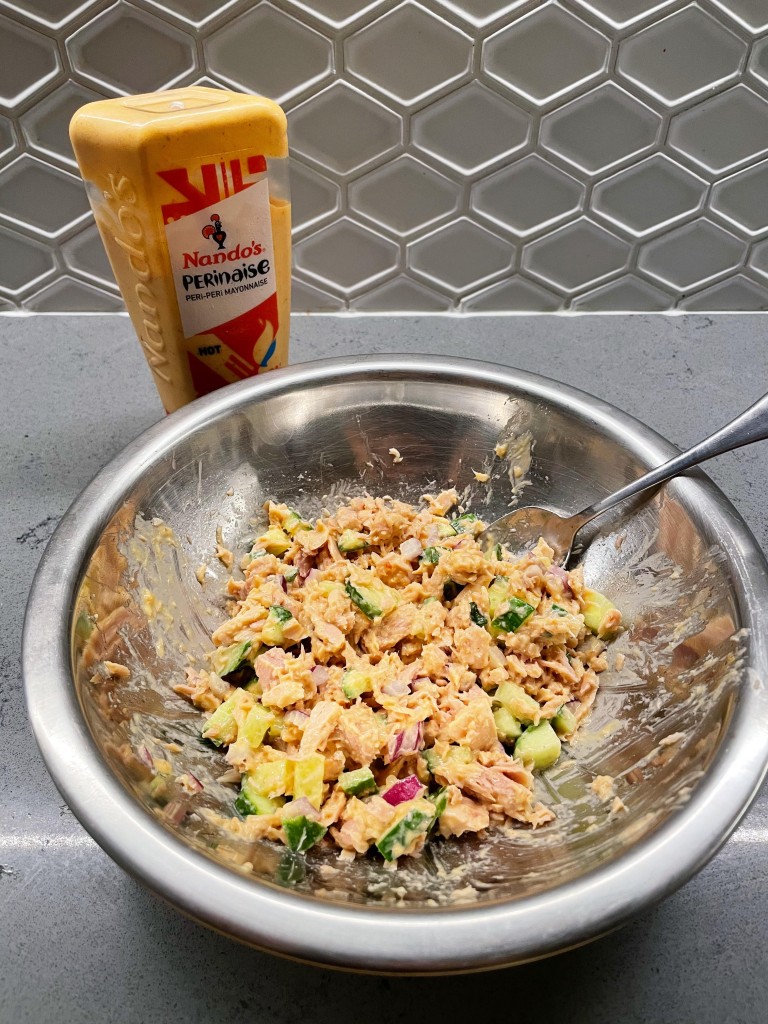
Not all food needs to look restaurant worthy to be beneficial for your health.
The above tuna salad used what was in the pantry and fridge, and made two sandwiches.
Ingredients:
- 2x Sirena Tuna cans (Basil infused flavour)
- 1x handful of diced red onion
- 1x handful of diced cucumber
- Nandos hot perinaise (1/3 the calories of mayonnaise)
Use the desired amount of perinaise, mix it all together, cover and leave in the fridge. Use it the next day to make a sandwich. I like to add some lettuce/spinach + tomato to add more vegetables to the sandwich. Additionally, this could be eaten just as a salad with additional greens or eaten with rice. The take home point is, this took under five minutes to prepare, and has sorted out two meals!
Enjoy!
James
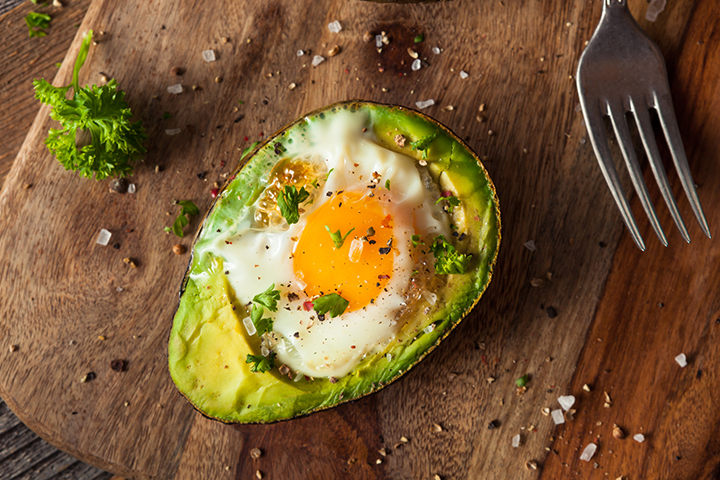
Start your day with an easy to prepare ‘protein and produce’ type breakfast, packed full of nutrients, and sugar free!
Ingredients:
- 6 avocados halved and seeded
- 6 large eggs
- salt and pepper, to taste
- 2 tablespoons chopped chives
Method:
- Preheat oven to 425 degrees F. Lightly oil a baking sheet or coat with nonstick spray.
- Using a spoon, scoop out about two tablespoons of avocado flesh, or more, as needed, creating a small well in the center of each avocado.
- Gently crack 1 egg, and slide it into the well, keeping the yolk intact. Repeat with remaining eggs; season with salt and pepper, to taste.
- Place into oven and bake until the egg whites have set but the yolks are still runny, about 15-18 minutes.
- Serve immediately, garnished with chives, if desired.
From https://damndelicious.net/2016/10/05/baked-eggs-in-avocado/
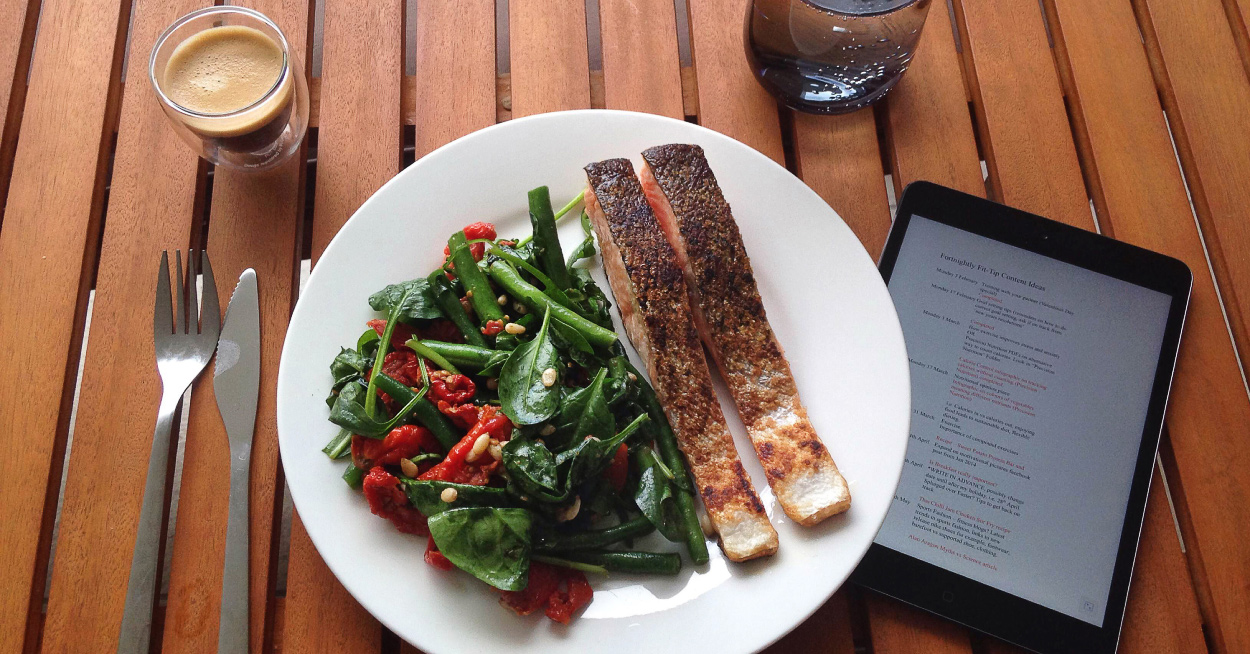
Improving your health requires changes that are sustainable for the long term. As a Precision Nutrition coach, we often provide guidance to our clients that are interested in fat loss on how to master certain food habits which will naturally lead to improved calorie control and food selection. These habits are:
1. Eat slowly and stop at 80% full
Most people (including myself) can often tend to eat their meals far too quickly, which lessens our ability to feel our hunger and appetite cues. Did you know it takes 20 minutes for our satiety mechanisms to kick in? The communication between our stomach and our brain is slow, and because of this, if we eat quickly we are far more likely to eat too much before our brain notifies us that we’re content. An excellent goal would be to aim to spend 15-20 minutes each meal. I realise this may be difficult for some so slowing down by even a few minutes will still have it’s benefits. This way, you will be able to properly gauge your fullness, which will enable you to eat until you’re ‘80% full’ which is defined as eating until you are no longer hungry, rather than eating until you’re full. This may take some practice but overall will be beneficial for your digestion, performance during your exercise, and better sleep if you’re eating before bed.
2. Eat protein dense foods with each meal
Research has shown that not only is a diet higher in protein completely safe, it may actually be important for achieving the best health, body composition (body fat % and muscle mass), and performance. The fact of the matter is, it’s hard to achieve these things with a suboptimal protein intake. By incorporating decent amounts of protein (20-30g for women, 40-60g for men) per meal, you will not only ensure you consume an adequate amount of protein, but you’ll also stimulate your metabolism, improve your muscle mass and recovery, and reduce body fat.
3. Eat vegetables with each meal
Science has demonstrated that in addition to the fibre and micronutrients (vitamins and minerals) packed into vegetables, there are also important plant chemicals called phytochemicals which are essential for optimal functioning inside our bodies. Unfortunately an inadequate vegetable intake is something I see all too often, which was reflected in Australia’s new food pyramid released earlier this year which placed vegetables (as well as fruit and legumes) as the food group we should consume the most. Given only an estimated 7% of all Australians reach their recommended intake of vegetables per day, it is something we should all aim to improve on. Including two servings of vegetables/and or fruit during each meal, not only will you regulate your overall food intake but you will also be receiving the many disease fighting benefits that vegetables provide.
4. Eat healthy fats daily
As a general rule of thumb, about 30% of your diet should come from fat, although this can change between each individual. Whilst you should focus on adding monounsaturated (extra virgin olive oil, some nuts, avocados, red meats, eggs) and polyunsaturated (some nuts, some vegetable oils, fish/fish oil) fats, including some saturated fats is ok too as a balance of all 3 types of fat is optimal. The benefits of dietary fat include the balancing of hormones, increased brain and nervous system health, and improved metabolism.
Mastering these four habits are simple and sustainable ways to improve your overall health, body composition, and performance, as your calorie control and food selection will be greatly improved.
(Inspired by the Precision Nutrition Certification Manual)
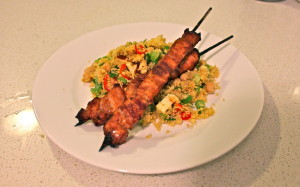
Kebabs, couscous, haloumi, and chilli. Four things I love! An easy recipe with a good amount of protein and flavour which doesn’t keep you in the kitchen for very long. Check it out below.
—
For the Couscous salad:
Method:
1. Bring stock to boil in a saucepan over high heat. Place couscous in a large bowl and pour the boiling stock over. Stir through with a fork. Leave covered for 5 minutes and stir through with a fork again to separate the grains.
2. Cut up haloumi into smaller pieces. Heat saucepan with oil over medium heat, and add haloumi. Cook for approximately 1-2 minutes each side or until golden brown.
3. Add haloumi to couscous along with spring onions, chilli, and chickpeas.
4. Make the dressing: whisk lemon rind, 1/4 cup lemon juice, paprika and oil in a bowl until properly combined.
5. Pour dressing over salad. Serve!
For the chicken kebabs:
Method:
1. Preheat a BBQ or pan on medium high, cook the kebabs while turning until properly cooked through.
2. Serve!

This breakfast/dessert idea is so simple a recipe is hardly needed. Here’s how it was done anyway.
Serves 1
1 ripe banana, peeled
1/2 cup Greek yogurt
2 tablespoons fruit jam or preserves
2 tablespoons sliced almonds or other nuts OR granola as is in the photo
1/4 cup fresh berries or other fresh fruit
Split the banana lengthwise and lay the two halves in a shallow bowl. Scoop out the yogurt and put it on top of the banana. Warm the jam in the microwave for 15 to 30 seconds or until it is very runny.
Use a spoon to drizzle the jam over the yogurt, and sprinkle the granola/nuts over everything. Top with raspberries/blueberries and dig in!
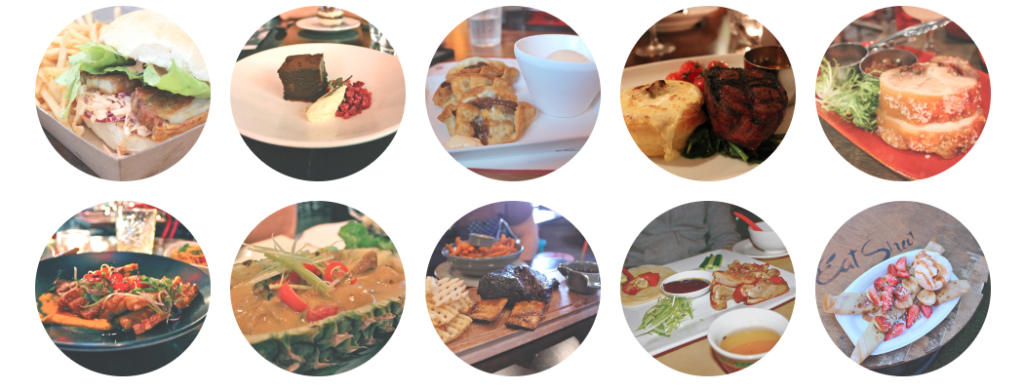
Strict ‘all or nothing’ approaches to food plans for clients are common amongst personal trainers and nutritionists. Often they result in failure due to their lack of flexibility. I’m all for being fit, healthy, and looking the part, but if a diet doesn’t have variety or allow me to indulge in foods I love, I’m not interested. Nonetheless, there is a diet option where you can literally, ‘have your cake and eat it too,’ and that’s by applying the moderation guideline. The moderation guideline is the 10-20% rule which is outlined in greater detail by leading nutritionist Alan Aragon.
In essence, the 10-20% rule allows you to eat whatever you want but still look great naked! Well, not quite, but with all things in life, everything should be in moderation. The basis of your diet should still come from whole and minimally refined foods. Reaching your minimum daily protein and fat intake (which varies for each individual) is still vital. If you are ticking these boxes, then consuming your go to indulgence foods is perfectly fine, as long as they are in moderation (10-20% of your daily Calorie target). Often dieting is too much of a psychological battle to stay within the parameters of a food plan because of lack of flexibility and variety, but with the 10-20% rule, this allows for indulgences more often than just the common ‘cheat meal.’ Of course, if someone chooses to have 0% of their food coming from sweets or processed food, that’s also perfectly fine.
As Alan Aragon has said, “Honouring personal preference is one of the most powerful yet underrated tactics for achieving optimal health and body composition.” Remember though, greater dietary flexibility is achieved by how high or low your physical activity levels are. So basically, consistent exercise is very important.
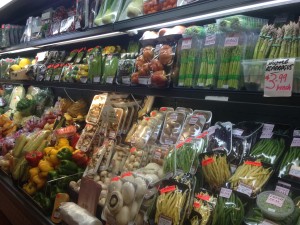
Superior Fruit Graceville
I’m sure many of you are familiar with, have seen or have heard of the glycemic index (GI). You know, those commercials and food labels that tell you why a particular food is more healthy because it is ‘low GI’. In short, the GI is a measure of how quickly a given food can raise blood sugar. The test is done solely on a specific carbohydrate food with a score between 1-100.
High GI foods such as sugar, white potatoes, cereal etc raise blood sugar more quickly, thus are scored higher. Low GI foods such as whole grains, nuts and vegetables do not cause the same rises in blood sugar, so are scored lower… But, do all the meals we consume only consist of high GI foods, or low GI foods? No. They are often a mix of both.
Consuming a high GI food (for example white potatoes) as part of a mixed meal of lower GI foods (vegetables, legumes) with a lean protein, would more than likely mean the overall GI of the meal is quite low. The vegetables and legumes in this case may slow the digestion of the white potatoes.
What does this mean for you?
Well, while you may see a lot of marketing to do with high GI and low GI foods, or have heard of people cutting out potatoes because of their GI score, just remember the GI index should not govern someone’s carbohydrate choices exclusively. Many different types of food both low and high GI have a wide range of vitamins and minerals which can benefit your health.
Eat a variety of whole and minimally processed foods and enjoy what is on your plate!
The best diets are the ones that consume all sorts of nutrients, as well as improve the performance, body composition (the amount of lean mass and fat mass present; basically how you look) and health of that individual.
To have a diet which contains all types of nutrients, you need to have VARIETY! Eating the same things each day, even if they are considered ‘good’ foods, means you are likely deficient in other areas of your nutrition.
Eat for your own health, your own performance, and your own body composition, but do yourself the favour and achieve all of that by eating a wide range of foods.
“Variety is the spice of life”

Because of my profession, when I’m partaking in activities that aren’t considered “healthy” such as having a few drinks or eating certain types of food, I’m occasionally questioned from someone. As it happened this week when I was overheard talking about having a few beers early Saturday morning for the Socceroos game, I thought I’d make this point:
Health goes beyond food and exercising. A good social life, building and maintaining quality relationships and a positive mental attitude are also vital cogs in the machine that is optimal health. So if you miss your home cooked meal sometimes to instead be with friends or family to go out, don’t worry about it.
Eating all types of foods from chicken breast to ice cream, or consuming alcohol in moderation is fine as well if your overall nutrient needs are being met. “Clean eating” isn’t something that needs to be done 24/7 to be considered healthy.
I will go out for drinks with friends and I will eat what I want, when I want, but I know myself that I meet my nutritional and exercise needs none the less. Be smart, be flexible, and be a good friend/partner and you can enjoy foods which are often vilified without it affecting your health, as well as maintaining and building the relationships that matter to you.
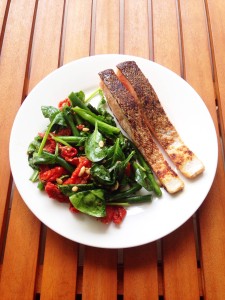
This was one of my lunches this week.
The protein source I opted for on this occasion was salmon for a source of Omega 3s (or ‘healthy fats’ as some people may know it by), which is an essential fatty acid the body can’t produce itself, so must be consumed through foods. As Omega 3s are known to fight disease and promote healthy joints, it’s not a bad choice.
The accompanying salad was a mix of my favourite greens and a sweeter addition in semi dried tomatoes, topped with pine nuts, which were all a good fibre source.
Salmon is one of my favourite meals, but everyone has their own food preferences. Eat to suit your needs and preferences and remember to try to keep consuming a variety of foods to meet your macronutrient and micronutrient needs!
—
FYI here is the recipe with approximate ingredients:
Crispy Skin Salmon with Semi-Dried Tomato Salad
Ingredients:
100g spinach
50g rocket
60g beans
semi-dried tomatoes
2 tablespoons pinenuts
olive oil
salt and cracked black pepper
2 teaspoons chives
2 x 200g salmon fillets
Mix salad into a bowl.
Season the salmon skin with salt.
Heat 1 table spoon olive oil in a medium non stick frying pan over medium high heat. Place the salmon in the pan, skin side down, and cook for 3-4 minutes or until the skin is golden and crispy. Turn the salmon and cook for a further 2 minutes or until your liking.
To serve, arrange the salad on a serving plate and add the salmon.

Healthy eating doesn’t have to mean you avoid the foods you love, nor does it have to mean hours and hours of food prep. Check out this recipe below for a simple and easy to prepare Thai dish (who doesn’t like Thai food?) which contains a great mix of macronutrients, and most importantly is delicious!
Method:
Step 1: Heat half the oil in a wok over high heat until just smoking. Add the almonds and stir-fry for 1 minute or until golden. Transfer to a heatproof bowl.
Step 2: Add half the chicken to the wok and stir-fry for 2 minutes or until brown. Transfer the chicken to the bowl with the almonds. Repeat with the remaining chicken, reheating wok between batches.
Step 3: Heat the remaining oil in the wok. Add the onion, broccolini, chilli and garlic and stir-fry for 2 minutes or until the broccolini is bright green and tender crisp. Add almonds, chicken, shallot and chilli jam and stir-fry for 2 minutes or until heated through.
Step 4: Spoon the stir-fry among serving bowls. Sprinkle with basil and serve with steamed rice.










